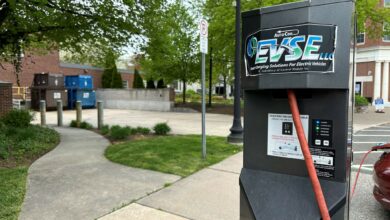BYD Seal U Review 2024

The SUV version of BYD’s most conventional car yet, the Seal. The Seal U – U representing Utility – looks a little like the Chinese firm’s handsome three-box saloon car if you smooshed it up in your hands like Play-Doh and remoulded it into a smooth two-box crossover.
It’s a five-seat family car that takes on the likes of the Nissan Qashqai, Hyundai Tucson, Kia Sportage and Ford Kuga – plus about a bazillion others – without breaking much new ground in the styling department. When many SUVs look bewilderingly aggressive, this subtler, calmer approach to car design might soothe your soul. Though the barely visible bootlid badging arguably pushes it a little too far into anonymity.
Advertisement – Page continues below
It breaks BYD’s electric-only stance in the UK thus far by being a plug-in hybrid, ensuring it’ll still bombilate around the top of company car lists without asking for any great lifestyle changes to accommodate charging. Its full, somewhat grandiose title of ‘BYD SEAL U DM-i with Super DM (Dual Mode) Technology’ essentially translates as ‘dual power’ to denote its mix of petrol and electric.
How does it work?
The engine can apparently provide either range-extension for the battery or propulsion directly to the wheels: BYD says the Seal U can act as a pure electric vehicle for 90 per cent of the time, though if battery power is severely low, it can run as a pure petrol car during motorway miles.
There are two configurations; a 1.5-litre non-turbo 4cyl engine pairs up with a single, 145kW electric motor for the 215bhp front-wheel drive Seal U Boost. Meanwhile the Seal U Design mates a perkier 1.5-litre turbo with an e-motor at each axle (150kW at the front, 120 at the rear) for a 319bhp total output and 0-62mph in 5.9 seconds… a whole three seconds quicker than the Boost. Feels like they’ve got the names mixed up.
Both use an 18.3kWh lithium-iron-phosphate battery assembled onto the frame of the car (BYD calls it ‘Blade Battery’) with numerous benefits: increased body stiffness, a lower floor to increase rear passenger legroom (often an EV bugbear) and improved thermal efficiency over more conventional rival battery setups. It’ll charge on home AC power at up to 11kW and DC fast chargers at up to 18kW, with the latter yielding a 30-80 per cent charge in 35 minutes.
Advertisement – Page continues below
The Boost claims 50 miles of electric-only range and 313.8mpg fuel consumption on the WLTP cycle with the powertrain at its optimum; the heavier, more powerful Design quotes 43 miles and 235.4mpg. In time we’ll also get the Seal U Comfort, which will sit between the two specs on price and which pairs a larger 26.6kWh battery with the slower FWD platform for 78 electric-only miles and a total range of almost 700 miles.
Will there be a fully electric version?
BYD offers a fully electric Seal U in its Chinese homeland; it’s currently exclusive to left-hand-drive markets but looks competitive with a choice of 71kWh or 87kWh batteries offering between 323 and 376 miles of range. Perhaps for now, the flexibility of plug-in hybrid power has much bigger sway in the family SUV sector.
And it seems safe to bet BYD knows what it’s doing when it comes to shifting as many cars as possible. Volume is thus far a speciality, BYD being the self-proclaimed ‘world-leading manufacturer of new energy vehicles’ – aka hybrids and EVs – selling more than seven million examples since it began car manufacturing in 2005. So BYD can do big numbers, but has it yet nailed the more difficult goal of genuine charm? Read on…
What’s the verdict?
“BYD is learning how to better satisfy buyers and the Seal U feels like its most competitive car yet”
Whereas our previous experience with BYD products has thrown up immediate and obvious caveats and demerits, the Seal U immediately feels like a much more honed product.
It drives with more aplomb, deploys less pestering safety systems and will be priced comfortably below its key rivals, too. It’s deeply pragmatic on paper while feeling reasonably premium inside. And if you don’t like the wackadoodle styling of many of its bestselling rivals, BYD’s more subtle design language ought to work a treat.
Ultimately, its U suffix doesn’t stand for USP: this car goes toe-to-toe with its reams of hybrid SUV rivals and performs well at almost any task you can fairly throw at it, just without any clear distinction or verve. If you can live with that, you’ll likely easily live with one of these.



